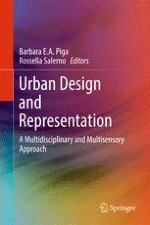2017 | OriginalPaper | Buchkapitel
4. To Be There, Or Not To Be. Designing Subjective Urban Experiences
verfasst von : Marco Boffi, Nicola Rainisio
Erschienen in: Urban Design and Representation
Aktivieren Sie unsere intelligente Suche, um passende Fachinhalte oder Patente zu finden.
Wählen Sie Textabschnitte aus um mit Künstlicher Intelligenz passenden Patente zu finden. powered by
Markieren Sie Textabschnitte, um KI-gestützt weitere passende Inhalte zu finden. powered by
